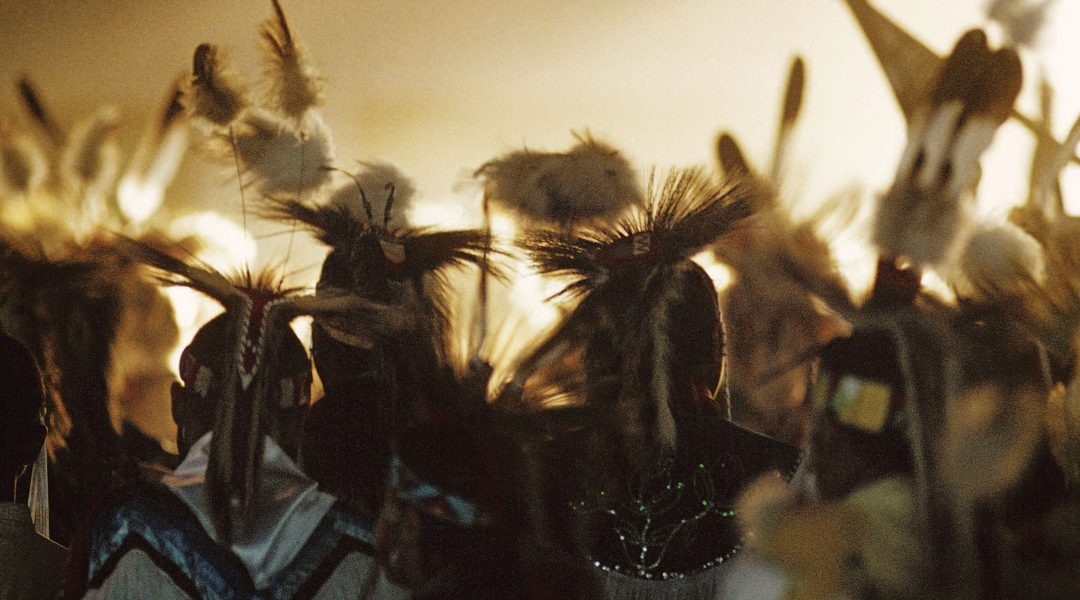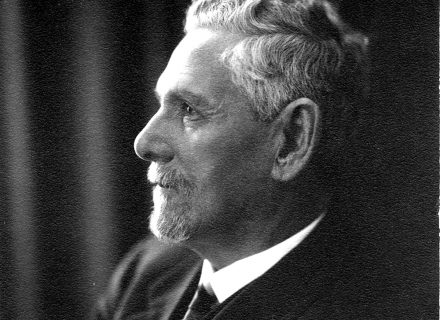The Native photographer’s “textured portraits” reflect the continuing vibrancy of the indigenous cultures he’s captured during his long and distinguished career.
For Ken Blackbird, photography is a surprising process of exploration. It might mean getting on the road and driving 400 miles up and 400 miles back to try to capture golden light illuminating the pink Sacred Heart Catholic Church on Montana’s Fort Belknap Reservation, only to find it cloudy all weekend. Or making a quick introduction of himself and asking to take a picture of a total stranger in full regalia at a powwow, only to find out later the guy’s a famous comedian from Canada. “It’s about having that urge to explore places off the main roads,” he says. “You need to be self-motivated. It takes work, timing, perseverance. It’s not a life for everybody.”
But it’s turned out to be the life for him. Now 60, Blackbird (Assiniboine, Gros Ventre) grew up on the Fort Belknap Indian Reservation and left at 19 when his parents died. “I was always kind of wandering,” he says. “I never really had a home.” There was a succession of jobs as a welder in Texas and as a forest ranger (and emergency firefighter) in Yellowstone National Park. Then came a degree from the University of Montana School of Journalism in 1992 and an extensive internship around the country, most significantly at the Chicago Sun Times. Blackbird says he just kind of fell into photography. But it put him on course for a career and gave him a home behind the lens.
“Working for a newspaper, you do that to make a living,” he says. His personal work — on view in the traveling exhibition Textured Portraits: The Ken Blackbird Collection — comes from a different motivation. “The images in the museum show, I did those because I love doing it. I wanted to do something on elders at Fort Belknap. They all spoke their native language and never left Fort Belknap. A lot of the elders are gone now. The people you see in the exhibition, I’m honoring them.” He points out Juanita Tucker, who was 103 years old and living by herself when Blackbird met and photographed her. “And those two girls on their horses? I went back five years later and stood in the same spot, and guess who rode across the river — the same two girls.”
There’s an element of serendipity and sociability in the life of the photographer that Blackbird appreciates: “I’ve learned one thing about being a photographer working in the field: I never know who I’m going to meet. When you get to know them, it’s always surprising. Every time you go out, you learn something new or you meet new people. That’s the exciting part.”
And there’s an aesthetic, however modestly Blackbird expresses it. “There’s a reason I’m doing this,” he says. “I’m looking for light. I’m looking for the layers of composition. I’m always looking at eyes, hands, backgrounds. I’m looking for someone doing something different. I’ve never thought of it as fine art. I just love taking photographs.”
Textured Portraits: The Ken Blackbird Collection is on view February 26 – August 27 at the Gilcrease Museum in Tulsa, Oklahoma, in conjunction with the exhibition Plains Indian Art: Created in Community. Textured Portraits: The Ken Blackbird Collection was created in 2014 as a traveling exhibit, with a grant from the Western States Arts Federation and the NEA, among others. All photographs in the exhibit are from MS 426, the Ken Blackbird Collection, Buffalo Bill Center of the West, Cody, Wyoming, USA. Gift of Ken Blackbird.




















